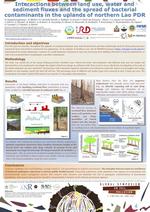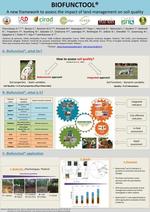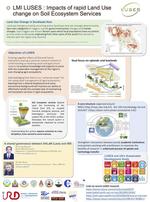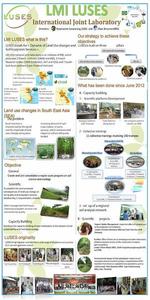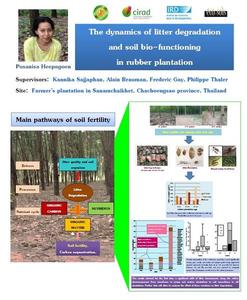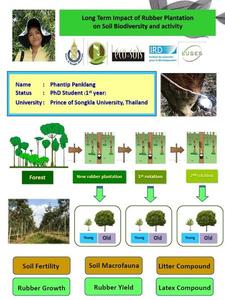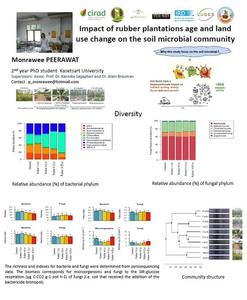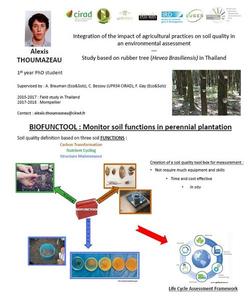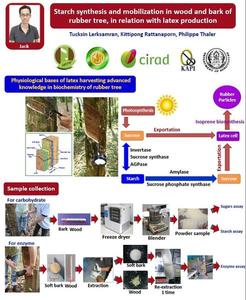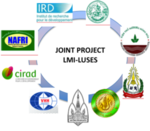ECOFILTER - effect of land use on stream-ground water interactions, overland flow genesis and the related ecosystem services of the critical zone
ECOFILTER - effect of land use on stream-ground water interactions, overland flow genesis and the related ecosystem services of the critical zone
A first specific action will be to continue and expand the ECOFILTER pilot project, which aims to assess, in the mountainous uplands of mainland Southeast Asia, the effect of land use on stream-ground water interactions, overland flow genesis and the related ecosystem services of the critical zone. From an applied perspective ECOFILTER’s overall objective is to produce new scientific knowledge that can be applied to effectively exploit the potential of soil and vegetation along hillslopes and in the riparian zone to filter overland flow and thereby converting grey waters (i.e. runoff loaded with sediments and contaminated with fecal pathogens) into blue (i.e. groundwater and streamwater) and green waters (i.e. soil water available for evapotranspiration). ECOFILTER was carried out for slightly more than one year during the first phase of LUSES. So far, three main research actions have been addressed and measurements carried out accordingly in Laos, Thailand and Vietnam, and have consisted of, namely:
1) Comparing the hydrological behaviour of studied catchments (i.e. overland flow genesis, groundwater inflows...) during storm and inter-storm periods;
2) Study the dissemination during floods of free and particle-bound faecal contaminants;
3) Quantify the trapping efficiency of the riparian zone depending on the vegetation cover types.
To date, ECOFILTER has allowed gathering original data about hydraulic conductivity of sub-surface soil horizons under different land uses at the plot scale in Laos (see MSc. by Kampaseuth XAYATHIP); such knowledge in turn increases our understanding of the modalities and determinants of infiltration depending on land use. Similar data have been acquired and are being processed for the catchments in Thailand and Vietnam. At the catchment scale, monitoring Electrical Conductivity (EC) in both overland flow (sampled at the plot scale) and stream waters at the outlets of catchments has allowed estimating Hortonian overland flow using EC-based separations of storm hydrographs in the three countries where the project is active. A key outcome of ECOFILTER has been summarize and formalize these first findings under the form of a collective paper involving partners from the three Asian countries (Laos: DALaM, NUoL; Thailand: DNP, LDD; Vietnam: SFRI; France UMR GET, UMR IESS-Paris), which was submitted in February 2016. Another achievement of ECOFILTER was to contribute to the capacity building component of LUSES through “on-the-job” training of colleagues from Thailand, Laos and Vietnam on the research methodologies used during the project and on approaches to process and interpret the data thus obtained, i.e. water quality measurements, hydro-dynamic parameters of soil measurements, tracer-based approaches, etc.
Although ECOFILTER has started to yield information regarding the effect of land use on these three key questions, it is not yet in a position to address the more general problem of the impact of land use on the partitioning of blue/green and grey waters at the landscape scale. In particular, additional research is needed to assess what plot patterns (landscape mosaics and land-use) should be implemented on slopes and along waterways. This is necessary to ensure that sustainability and productivity are maximized/optimized via a rational management of water fluxes, i.e. agricultural practices that favour rainfall infiltration and soil water storage while limiting stream water contaminations and soil and fertility losses by overland flow.
Further, to understand and quantify the different roles of overland flow and groundwater flow during flood events, it will be necessary to develop and apply modeling techniques that are adapted to these small upland hydrological systems. To this end, it will be necessary to collect additional data that document the fine dynamics of the different water masses and their relative E. coli loads during storm events. Indeed, groundwater outflow during storm events may have antagonistic influences on streamwater contamination through a dilution effect of contaminated overland flow waters along the stream path on the one hand, and the resuspension of contaminated sediments in the streambed, on the other hand. Another important conclusion of ECOFILTER was that the relatively high levels of background contamination in each of the three watersheds monitored indicate the need for more information on the behaviour of faecal indicator bacteria (FIB) in tropical environments. In particular, better estimates of die-off rates of FIB in these environments and a clarification of whether or not these indicator bacteria are capable of surviving and growing outside their host are necessary.
LMI LUSES Posters
Presentation of the ECOFILTER Team at the Global Symposium on Soil Pollution (GSOP18), FAO, Rome, 2-4 May 2018
Poster of the BIODIV TREE team presented at the SOM management conference held in Braunsweig on the 30 and 31 of May
Poster of the BIODIV TREE team presented at the SOM management conference held in Braunsweig on the 30 and 31 of May
Synopsis of LUSES 2017-2019
- LDD-IRD a long history of scientific cooperation
- Impact of Rubber Tree Plantation on Soil Biological Diversity
- LDD-LMI LUSES Platform of Microbiology
- LMI LUSES presentation
- PCR LDD-LMI LUSES Platform
- Laboratory guide: hygiene and safety in English
- Laboratory guide: hygiene and safety in Thai
PhDs students' scientific posters
The dynamics of litter degradation and Soil-bio functioning in Rubber plantation : Pusanisa Heepngoen
Long term impact of Rubber Plantation on Soil biodiversity and Activity: Phantip Panklang
Impact of Rubber Plantation age and Land use change on the soil microbial community : Monrawee
Integration of the impact of agricultural practices on soil quality in an environmental assessment : Alexis
Starch Synthesis and Mobilization in wood and bark of rubber tree, in relation with Latex production : Tuksin




